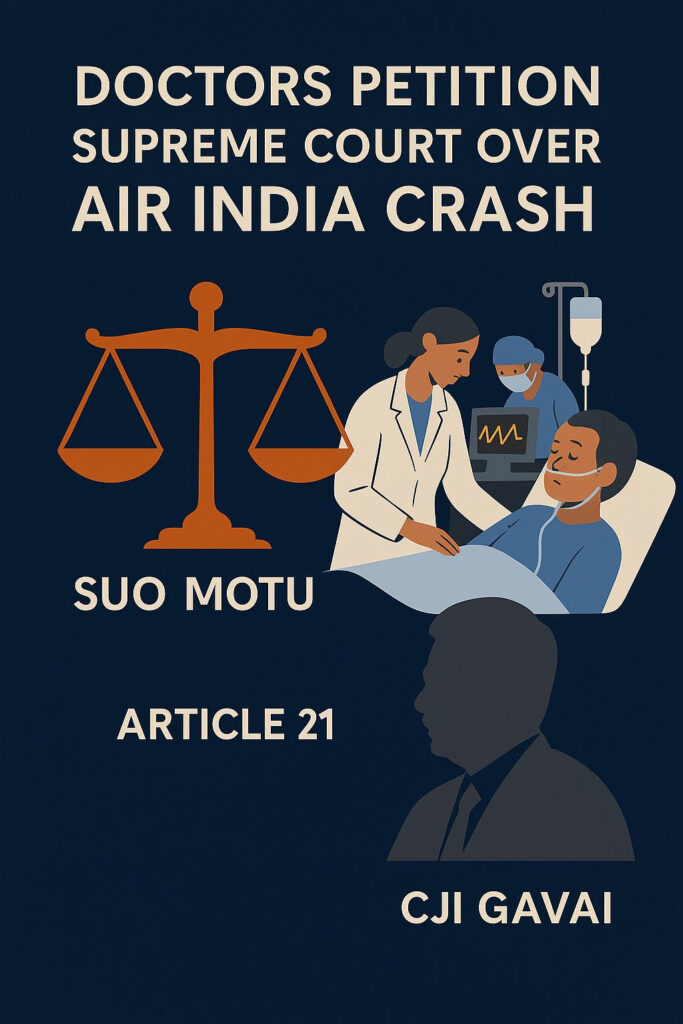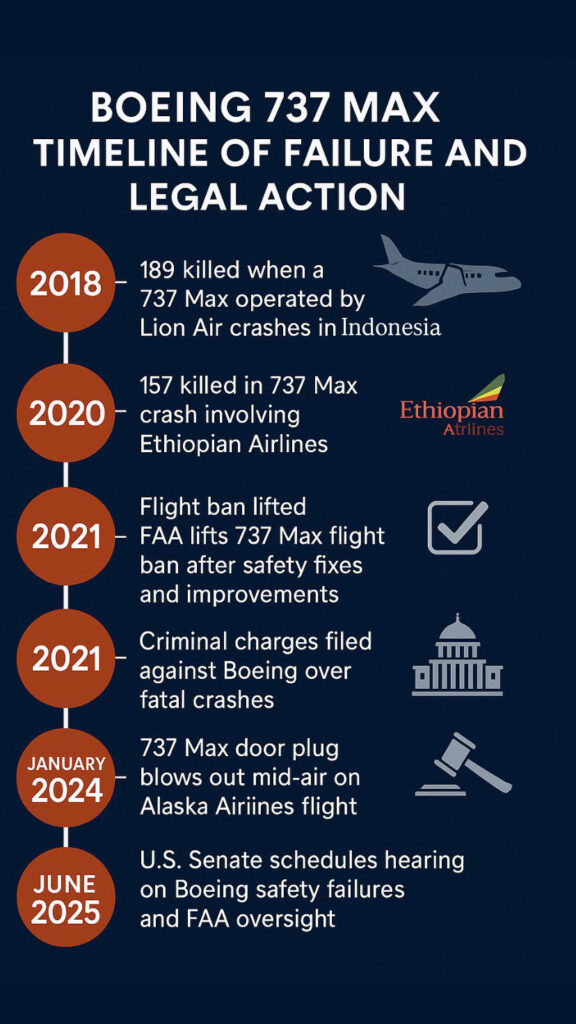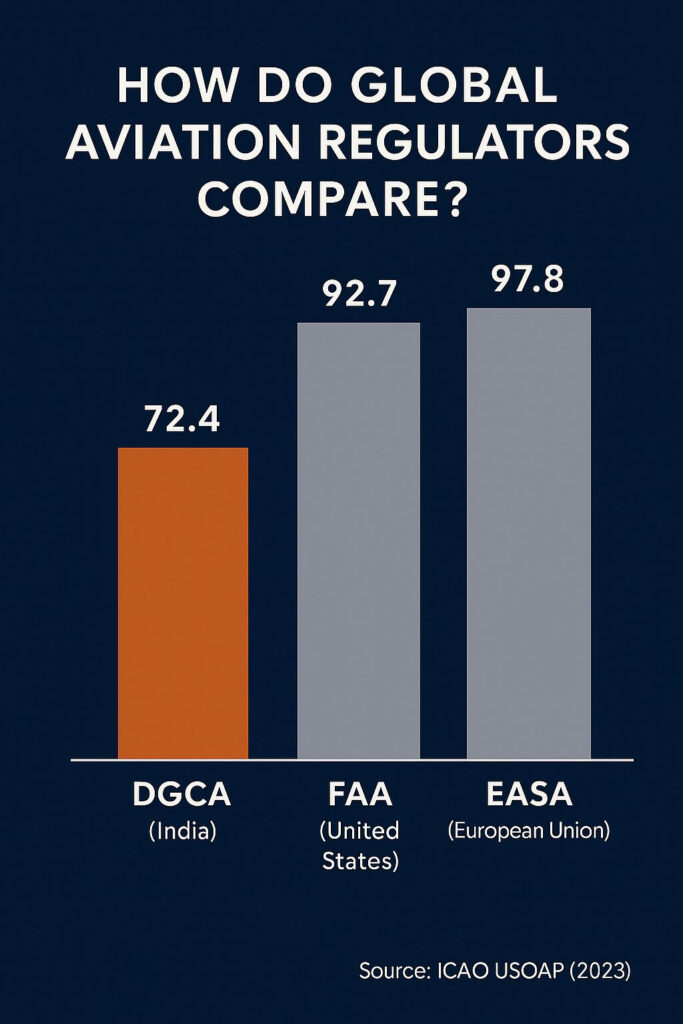Aviation Accountability India is under intense public scrutiny after the tragic Air India crash in Ahmedabad. As investigations unfold and petitions reach the Supreme Court, one urgent question remains, can India learn from how the United States responded to the Boeing 737 Max disasters? In this blog, we extract five critical lessons from the US Senate’s Boeing hearings that India’s regulators, judiciary, and Parliament must urgently reflect on. From whistleblower protections to international audit scores, each section reveals a gap that must be closed if passenger safety is to be taken seriously.
What Happened to AI‑171?
Aviation Accountability India is facing its most urgent reckoning in decades after the catastrophic crash of Air India Flight AI‑171. The Boeing 787 Dreamliner plunged into a densely populated neighborhood just moments after takeoff from Ahmedabad. With 279 confirmed deaths, this is now one of the deadliest aviation disasters in Indian history.
On June 13, investigators recovered the black box and cockpit voice recorder. The Aircraft Accident Investigation Bureau is now coordinating with Boeing and FAA officials to determine whether this was a mechanical failure, regulatory oversight, or something worse.
This tragic event has become a defining moment in the growing discourse around Aviation Accountability India must urgently address.
How Has the Government Responded?
- 34 Dreamliners across Indian airlines grounded by DGCA
- Safety audits ordered at all major airports
- Gujarat forensic teams deployed for DNA-based identification
- PMO and Home Ministry are directly monitoring the inquiry
- AAIB has been asked to submit a primary findings report within 14 days
Despite swift administrative action, questions around Aviation Accountability India remain unaddressed. There is no transparent disclosure on when findings will be made public or whether international observers will have access to investigative material.
Supreme Court Petition by Doctors: A Constitutional Push
In an unprecedented move, a group of doctors from across India filed a petition in the Supreme Court on June 14, 2025, urging suo motu cognizance under Article 21. The plea argues that the crash represents a systemic violation of the right to life and dignity.
The petition calls for:
- An independent judicial commission
- Stronger emergency medical response protocols
- Prosecution of corporate negligence
- A permanent aviation compensation tribunal

Legal experts argue that this petition could finally elevate Aviation Accountability India from a bureaucratic issue to a constitutional responsibility.
What the United States Did After the Boeing 737 Max Disaster
The comparison with the US is unavoidable. In January 2024, a Boeing 737 Max 9 operated by Alaska Airlines lost a door plug midair. The FAA immediately grounded the fleet. The US Senate summoned Boeing’s CEO, where explosive testimony from whistleblowers revealed:
- Retaliation against safety engineers
- Falsified maintenance records
- Corporate cost-cutting at the expense of passenger safety
This triggered nationwide reforms, higher FAA budgets, and new manufacturing oversight rules.

The question arises, if the US can hold companies and regulators accountable so publicly, why is Aviation Accountability India still shielded from similar transparency?
ICAO Safety Scores: A Global Comparison
The International Civil Aviation Organization (ICAO) conducts regular safety oversight audits. The comparative scores tell a story:
| Category | FAA (US) | EASA (EU) | DGCA (India) |
|---|---|---|---|
| Legislation | 95% | 92% | 72% |
| Oversight | 93% | 91% | 69% |
| Licensing | 94% | 90% | 74% |
| Operations | 96% | 89% | 66% |
| Accident Investigation | 92% | 88% | 55% |

India scores the lowest in accident investigation, which directly impacts the effectiveness of Aviation Accountability India.
Why Whistleblowers Still Do Not Speak Up in India
In the United States, the AIR21 law protects aviation whistleblowers and enables anonymous disclosures without retaliation.
India’s Whistle Blowers Protection Act, 2014:
- Has no aviation-specific provision
- Does not protect private airline employees
- Offers no anonymous digital portal
- Has not led to a single successful aviation whistleblower prosecution

The reluctance to come forward is a symptom of deeper institutional gaps that Aviation Accountability India has yet to bridge through robust legal reform.
How Parliament and Judiciary Must Respond
As public anger mounts, legal experts and policy analysts agree that Aviation Accountability India is no longer just a regulatory concern, it is a matter of constitutional urgency.
In Parliament, opposition parties have raised urgent questions about Aviation Accountability India, demanding greater transparency from the Ministry of Civil Aviation.
To address the crisis:
- An Independent National Aviation Safety Board must be established
- CEO and regulator accountability must be legally binding
- India must implement an aviation-specific whistleblower law
- ICAO audits must be made public with citizen access
Final Takeaway: From Silence to Safety
The Ahmedabad crash has forced India to confront systemic failures. Strengthening Aviation Accountability India is no longer optional, it is a matter of national safety and legal credibility.
If you or someone you know was affected by an aviation accident, LexNova Consulting provides legal counsel in:
- Compensation claims
- Regulatory petitions
- PILs on aviation safety
- Legal documentation for affected families
Aviation Accountability India must no longer be postponed. It must be enforced before another tragedy forces the nation to reckon again.
Aviation Accountability India must move from policy discussions into actionable, binding legal frameworks if India is to prevent future tragedies and uphold its constitutional promise of safe skies. As we reflect on these systemic failures, it is clear that Aviation Accountability India is not just a legal concern but a democratic imperative.
References
- Supreme Court Petition on AI‑171 Crash, LawChakra (June 14, 2025) – Read here
- ICAO Universal Safety Oversight Audit Programme (USOAP)- Read here
- Safety First: Restoring Boeing’s Status as a Great American Manufacturer Senate Commerce Committee hearing (April 2, 2025) – Read here
Contact LexNova: Know Your Aviation Rights
If you or someone you know was affected by an aviation accident, we are here to help. LexNova Consulting supports victims and families with:
- Compensation claims
- Legal representation before tribunals
- Public interest litigation for aviation accountability
- Regulatory complaints and RTI drafting
Frequently Asked Questions
1. Who can file a PIL after an aviation accident?
Any public-spirited individual, such as doctors, lawyers, or civil society members, can file a Public Interest Litigation (PIL) in the High Court or Supreme Court if regulatory failure violates fundamental rights.
2. What is Article 21 and why is it relevant here?
Article 21 of the Indian Constitution guarantees the Right to Life. Regulatory neglect leading to preventable deaths in aviation accidents can violate this right, making it justiciable.
3. What is ‘suo motu’ action by the Supreme Court?
Suo motu means “on its own motion.” The Supreme Court can take up matters of grave public importance like the Air India crash even without a formal petition.
4. Does India have whistleblower protection laws in aviation?
No. Unlike the US FAA’s Air21 law, India lacks a dedicated legal mechanism to protect aviation whistleblowers. This blog highlights the urgent need for such reform.
5. How can I support better aviation accountability?
You can file RTIs, sign public petitions, support NGOs working on regulatory reform, and share verified information to raise awareness and pressure authorities.
6. What is ICAO and how do they rate India?
ICAO (International Civil Aviation Organization) audits countries on safety oversight. India’s DGCA scored 72.4%, much lower than the US (92.7%) and EU (97.8%).
7. What does LexNova offer in aviation-related legal support?
LexNova provides policy-legal research, public litigation support, whistleblower drafting help, and legal advisory for anyone impacted by civil aviation failures.
Disclaimer: This blog is intended for informational and public awareness purposes only. The content is based on publicly available reports and regulatory data as of June 2025. It does not constitute legal advice, official aviation consultancy, or represent any government or judicial authority. Readers are advised to verify updates from official sources before relying on any specific information presented herein.

